




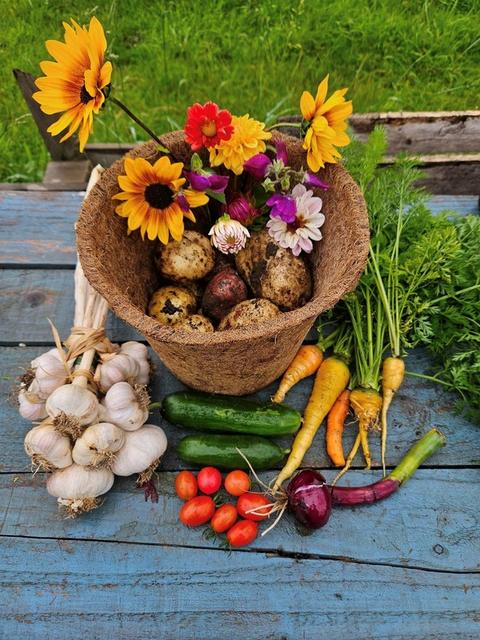





















1. Check in with yourself. This is a super quick and easy mindful gardening meditation which is perfect to do just before you start your gardening session Before you head out into the garden simply pause for a moment, close your eyes and take a few deep breaths Really focus on your breathing and use this time to check in with yourself Take note of how you feel both physically and mentally Now open your eyes and look around your garden and observe things as they are Notice the sights, sounds and smells and don’t forget to look up This short exercise will allow you to reset your mind, begin to relax and get into a more mindful mindset ready for a productive gardening session ahead
2. Garden wanders. Another great mindful gardening exercise which can be done on a daily basis as it only takes a few minutes Taking a stroll around your garden gives you the chance to see what’s new and how things are progressing throughout the seasons It also allows you time and space to breathe, to slow down and switch off autopilot, which so many of us default to, to combat our busy lives. Incorporating garden wanders into your regular mindful gardening routine helps you to stay present in the garden and, in turn, helps you to notice more. It also allows your mind and body a well-earned break.
3. A worry for a weed. This is a fantastic visualisation technique which is particularly good if you suffer with stress, anxiety or depression. Imagine each weed is a different negative thought, emotion or worry. As you physically remove the weeds from the ground imagine that you are letting go of those worries from your mind Once you have finished, the weeds (or worries) are disposed of This is a cathartic process which helps to banish those negative thoughts, resulting in a clear mind and a weed free garden - win win!
4. Sow & Grow. Sowing seeds and planting out are wonderful mindful gardening activities They are both rhythmical in nature so perfect for calming the mind and reducing anxiety They also give you a sense of purpose, allow you to stay present and help you to cultivate the caring side of your nature Watching seeds and plants that you ’ ve tended to, grow and flourish gives you an enormous sense of pride and achievement
5. Create a space to sit. It can be all too easy to spend time busying yourself in the garden, that you sometimes forget to stop and enjoy it. Creating a space to sit amongst your plants gives you a place to relax, unwind, observe and reflect. If you can add water of some description so much the better. Still water is reflective and allows us to see things as they really are, whilst running water provides us with soothing, calming sounds. Taking the time to sit and just ‘be’ allows you to enjoy the beauty of your garden and the peaceful haven you ’ ve created
By Lucy Spry




”allotment has saved my life several times now”
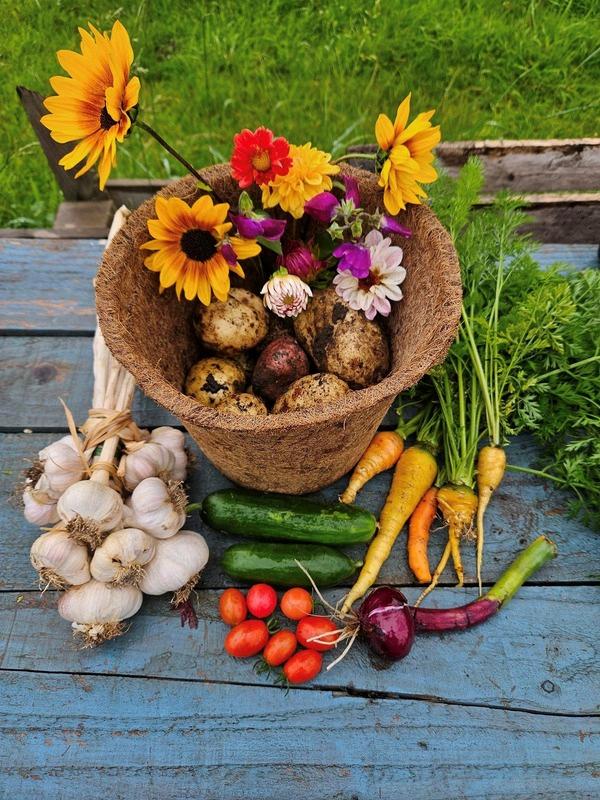



 By
By
I would come back into the house feeling lighter and my head would be calmer This was my first taste of the positive impact gardening could have on your mental wellbeing After my first year of growing vegetables at home, I quickly realised I needed a larger space Thankfully, I didn’t have a long wait until I was offered my first allotment plot! In April 2021, I began working on Plot 11 The setting up process was one I hated, and after a couple of weeks of clearing the plot, I planted a bed of potatoes there just so I knew something was growing With a lot of determination, I managed to have the plot prepped and ready to go after 6 weeks. The sense of accomplishment was a confidence boost and perfectly timed.
At this point I was going through a very difficult situation at the company I worked for, and it had had a significant impact on my mental health and self-confidence. My anxiety attacks had returned, and I began suffering with depression. My low moods left me not wanting to get out of bed, but the allotment gave me a reason to leave the house. The allotment truly got me through this and reminded me daily that I wasn’t useless and that I could create something beautiful (and edible!) from nothing, and that was something to be proud of.
I eventually left the company and my mental health improved significantly Sadly, in 2023 I suffered several losses which would completely floor me In January I lost a dear friend, and a few weeks later our great aunt passed away As if this wasn’t enough to cope with, in March, my long-term foster niece passed away suddenly in her sleep, and just a month later I had to make the impossible decision to end a pregnancy Not surprisingly, I had a complete mental breakdown I was off work for 6 weeks I spent several hours a day at the allotment and I would come away feeling calmer It was like meditation for me, getting my hands dirty and watching the plots come back to life after a long winter I don’t think it’s possible to fully explain the healing effects of growing your own food and flowers, the best I can do is to say that it centres you, calms the noise in your mind and starts making some sense of it all.


At the end of 2023, I was awarded ‘Best Plot’ at the local allotment AGM, and on the same day I was awarded the ‘Endeavour’ award by North Warwickshire Allotment Federation. I’m not ashamed to say that I cried. It felt like such a relief to end the year on a positive note. The allotment has saved my life several times now, and it feels so special when others recognise the love that has gone into making it my sanctuary
 By Amy West @amysallotmentadventure
By Amy West @amysallotmentadventure

Over the past few years, I have started to reflect on my mental health, and when I look back on photos of my past, I can see that I am putting on a smile. This has made me realise that I have been struggling with my mental health for many years, but was not aware that I was coping rather than working through it Being dyslexic, I have been pulled up on, and constantly told, when I have said something wrong or mispronounced a word So, throughout my life, my failures have been pointed out to me Now I am older, my day-to-day job is highly stressful and fastpaced, and finding something to help me feel more grounded, and find that passion I longed for, was vital
Like many of us, I have not been very kind to myself over the years, always putting myself down and not believing I can do things; always believing someone else could come along and do it better than me
About six years ago, when I decided to take on an allotment, I had no idea it would improve my well-being as much as it did. I had nothing at the time that I would say was ‘ my thing’ (Other than studying for an accounting qualification). I was given a blank canvas, which meant I could use my creative side again.
This small patch of land, which cost me £7.50 a year, taught me that failure was ok; if it didn’t work that time, I could try again. Like most, I did become overwhelmed.

That little voice on my shoulder started making me feel wrong about being out on my allotment because I had coursework to do, and whilst I was doing the coursework, it made me think that my allotment was starting to get messy In Jan 2021, I gave up my allotment to work on growing in containers and small spaces in the garden
I raided Freecycle and Facebook for Pots and started growing flowers and veggies in my back garden I knew straight away that this is what I wanted: to show everyone what they can achieve in their back garden.
Shortly after I started this, we moved house. The new property had a great sized back garden, and I thought this was a perfect opportunity to explore a garden allotment. This space taught me much about managing my mental state and what is essential to keeping a positive frame of mind. Unlike many, I massively benefited from working from Home 90-100% of the week.

I got outside more, walked the dog, and got my hands dirty regularly I knew I couldn’t go back to pre-Covid working patterns to keep me from spiralling I knew this was how I was meant to work; my career and hobby existed together on the same day

Unfortunately, this little patch didn’t see an entire season as we needed to move for our sanities, as the landlord was not fantastic We found a tremendous landlord who was happy for me to develop a garden allotment, and I can't thank him enough One growing season in and I have become self-sufficient in salad leaves and that little self-doubt voice hasn’t been around for 18 months Being able to get out and garden within the working day has made me more efficient in my career, my focus has massively improved, and I can work at my desk for 3 hours without getting distracted (I often wandered when in the office) Without a doubt, without starting my gardening journey six years ago, I wouldn’t be where I am today, either mentally or professionally I’m now doing things which would have been way out of my comfort zone just a few years ago and I owe it all to gardening and growing my fruits, vegetables, and flowers.
I have come a long way with my mental health, but there is always room to grow and improve.


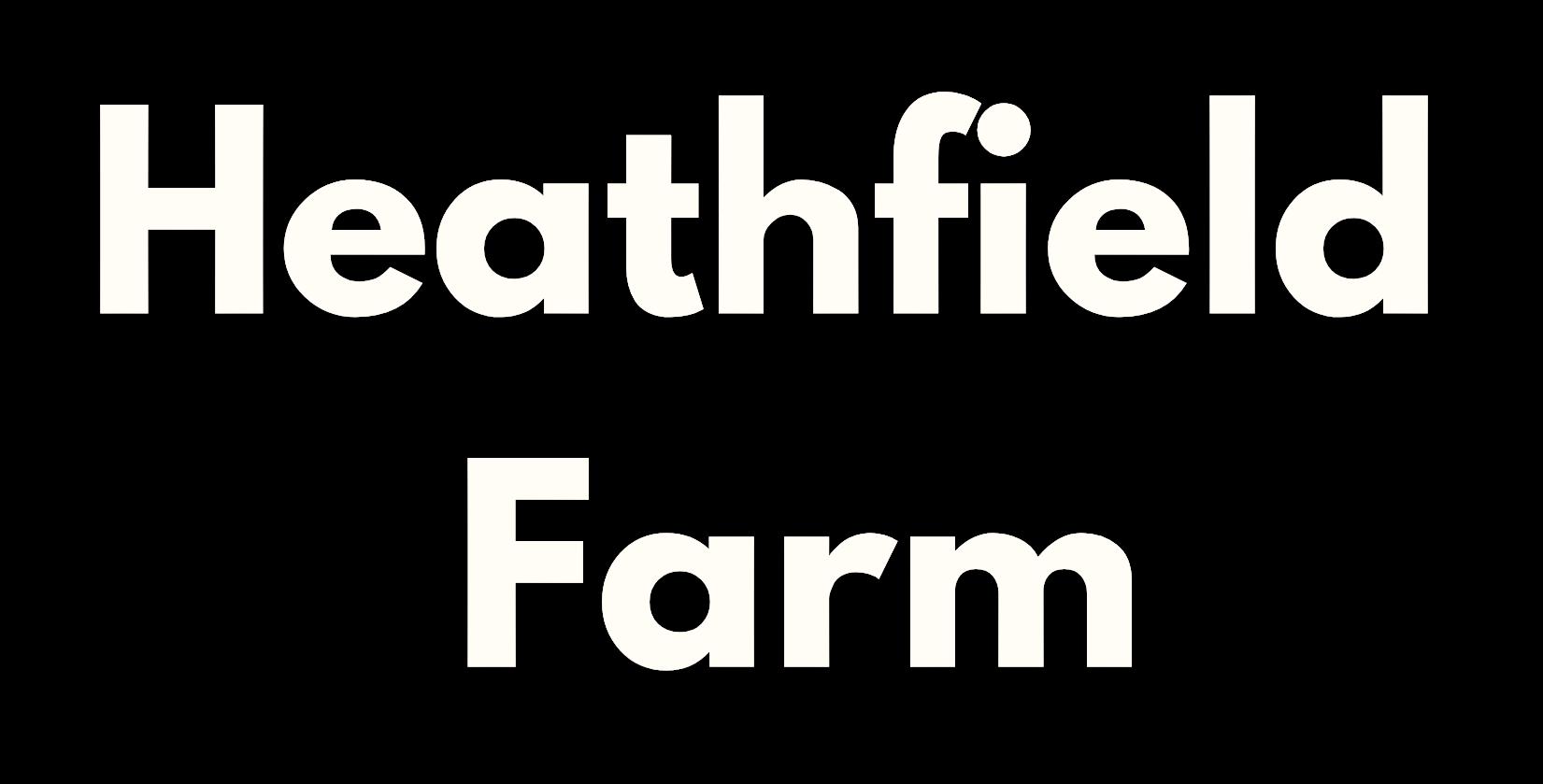


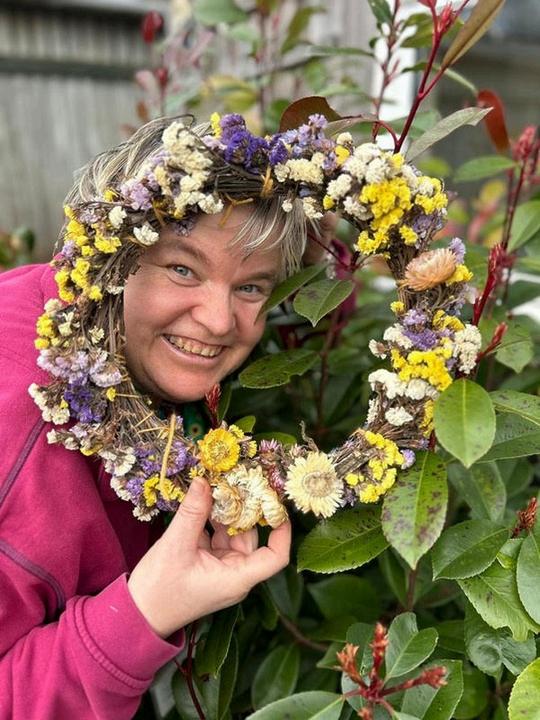
As I get out of my car and walk towards the barn, I am greeted by a lady with a huge smile who tells me that I look beautiful, “just like Meryl Streep” I smile and thank h I might be half Meryl’s age, but I’m flattered nonetheless The site manager laughs and tells me she says this to everyone.
 By Becky Searle @sowmuchmore
By Becky Searle @sowmuchmore
A small group of women wearing wellies and carrying gardening tools are making their way slowly and happily to one of the polytunnels. They stop to look at flowers or point at birds. The polytunnel is full of tiny seedlings, lovingly and haphazardly sown into any container they can find. There is a bucket of brightly coloured wooden plant labels with hand-painted words and pictures announcing future crops.
Outside, rows of raised beds are filled and ready for spring planting, and beyond that, a newly planted woodland is beginning to unfurl into life A large wildlife pond causes one of the women to stop and squeal when she thinks she sees some frog spawn A hand-made bench props up a hand-made bug hotel overlooking the pond Beyond us, some men are busily cutting wood to make a fire
On a rainy day, they can retreat into the barn to do some woodwork or into a small classroom with a kitchen to do arts and crafts or cook What sets Heathfield Farm apart is that the care centres around being outside and participating in practical tasks such as growing food, tree planting and land maintenance The service users are encouraged to show their creativity and get involved with things that promote their selfconfidence and independence
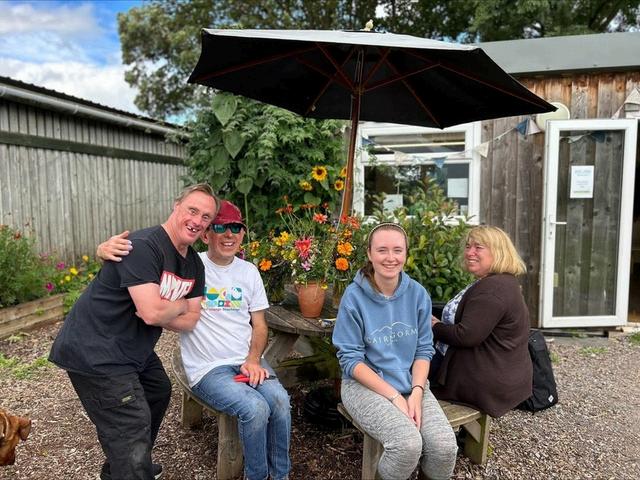
These kinds of facilities are rare, and for the users and their families, they are essential
Gardening is well-known for its remarkable ability to relax, centre, and empower people Spending time outside and participating in practical activities can help us connect with nature and learn new skills It can be incredible to realise what we're capable of when the end goal is a garden. For adults with learning disabilities, opportunities like this can be a lifeline in a confusing world.
I am immediately struck by the peace and calm of the place. Nothing is rushed, nothing is forced, and nothing is perfect. It’s as much made by the service users as for them It’s a place of joy and tranquillity Unfortunately, this place is at risk of closure in the not too distant future

Most of the service users are referred by social services, and their places are subsidised to help those in need. However, due to recent budget cuts, this is happening much less. The result is that in order to remain sustainable, Heathfield Farm needs help finding more users to keep it open There are few overheads, and it is relatively cheap to run so the facilities provided are competitive and affordable and much loved by their users They urgently need to diversify to stay open long-term If they remain open, local schools and community groups could benefit enormously from the facilities here
However, funding is urgently needed to help them stay open whilst they are in the process of diversification and opening more income streams They plan to have designated days for adults with learning difficulties and other days where they offer experiences, workshops and space for the local community To help bridge the gap, we have set up a Just Giving page to raise some much-needed funds.
This money will go towards sponsoring some places for service users, who are currently unable to access this resource, to come and enjoy the farm whilst they diversify.
Without these funds, the farm will be leased to commercial farmers, the land will be closed to the public, and the young adults who depend on this space will lose out on these fabulous opportunities



Also known as culinary aromatics, herbs that we can use in our food and cooking are wonderfully versatile to grow ourselves As a qualified nutritional therapist and keen gardener, I love exploring how culinary herbs bring plant biodiversity to our growing spaces and how we can reap many health benefits from their nutritional properties Cultivated and consumed across many different cultures, some of the most well-known and commonly used culinary herbs (in Western cuisine) can be grouped into perennials and annuals
Rosemary, marjoram, thyme, oregano, sage, mint, and tarragon either grow as winter-hardy shrubs or as deciduous clusters of tender leaved plants These herbs are highly adaptive and although mostly originated in warm climates such as the Mediterranean, they are very happy to grow in colder regions too Whilst readily available to purchase from plant nurseries, these herbs are also easy to grow from cuttings, especially rosemary, mint and tarragon, or will readily self-seed, like marjoram. The one requirement that each of these herbs does have is well-draining soil. Simply add a large scoop of grit to your planting space/pot and mix in well before planting. Given their prolific growing nature mint and tarragon are best grown in containers. They will die back each winter with the help of a robust prune and enjoy a good mulch in early spring when signs of fresh growth appear.
Like annual flowers, herbs such as parsley, dill, coriander (cilantro) and basil varieties have a one-year life cycle and can be resown throughout the year Parsley and coriander are prone to bolting in full-sun or heat and therefore enjoy slightly cooler temperatures, perfect for those shady spots in the garden or a balcony They are best sown successionally under cover in late winter to plant out in early spring when the longer daylight hours support their healthy root formation Once established and you can see their inner new leaves come up, pick regularly to encourage strong new growth Basil varieties, in contrast, love the sun and heat and prefer good hydration Sow under cover in small pots in early spring and either grow-on indoors or plant out after all risk of frost has passed Similar to the culinary pairing, basil is a wonderful companion plant for tomatoes- enhancing the health of the tomato plant and deterring pests such as tomato hornworms and aphids.
Culinary herbs are a wonderful source of vitamin C and minerals such as potassium, calcium and magnesium. Additionally, they are also rich in plant compounds known as polyphenols There are many different polyphenolic compounds distinctive to each herb with fascinating research emerging on the therapeutic benefits that consuming a variety of polyphenolic rich foods have on our gut health With the trillions of microbes living in our colon, it is said that we are more microbial than human These microbes are particularly fond of consuming polyphenols and reward our bodies with their beneficial byproducts that support our health, including our immune function, brain health and cardiovascular system



Often, it’s herbs that inspire my culinary endeavours the most Fresh parsley and mint for a delicious new potato salad, or dill to create a cosy seafood chowder Basil and oregano for a slow cooked tomato sauce, or tarragon for the signature taste in a classic French chicken casserole
One of my personal favourites to both grow and eat is flat leaf parsley. Subtly flavoured-enough to eat in greater quantities, compared to some of the stronger tasting herbs such as rosemary or thyme, parsley can play a central nutritional role in the kitchen by adding handfuls of the chopped fresh herb to dishes such as tabouleh, pasta salads, hearty soups and stews.
Rosemary is a popular evergreen shrub that no roast spud-laced dinner should be without Rich in a variety of polyphenols, adding rosemary to the pan when frying or grilling meat has been claimed to reduce some of the harmful components that can occur during the cooking process of red meats*
· Tarragon is a generous tender leaved perennial With its slightly anise/liquorice taste, it pairs surprisingly well with scrambled eggs and omelettes, as well as creamy sauces for oven baked fish and chicken.
Although coriander tends to bolt at the slightest sign of summer heat, it is well worth growing in a shady cooler spot. Once it gets going, coriander can grow very quickly, and you end up with a lot of it! My favourite way of preserving coriander is blitzing it with coconut oil, fresh ginger, turmeric and chopped lemon grass to freeze in icecube trays Next time you want a quick stir-fry or Thaiinspired curry, simply pop a cube or two in with your veggies for a delicious fragrant meal
· Many culinary herbs are also delicious in teas and infusions, with mint and fennel known for their digestive supportive properties Simply snip off mint leaves and fennel fronds to add to boiling water Leave to infuse for 35 minutes, strain and enjoy





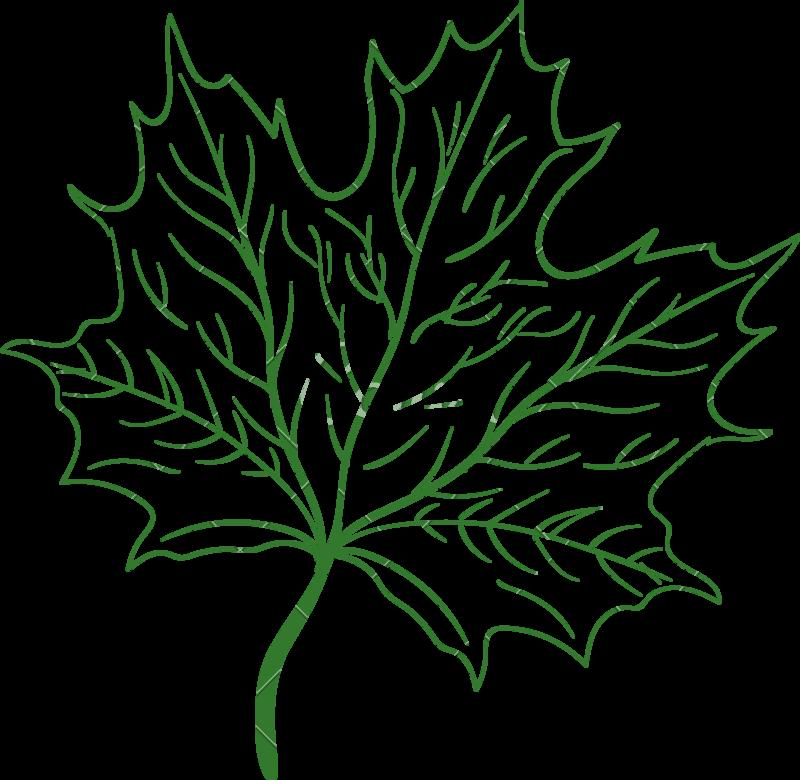
“Step into the enchanting world of the ‘Gardenia’ collection from Flicker Crypt, where elegance meets nature in three exquisite garden candle scents with a gothic twist.
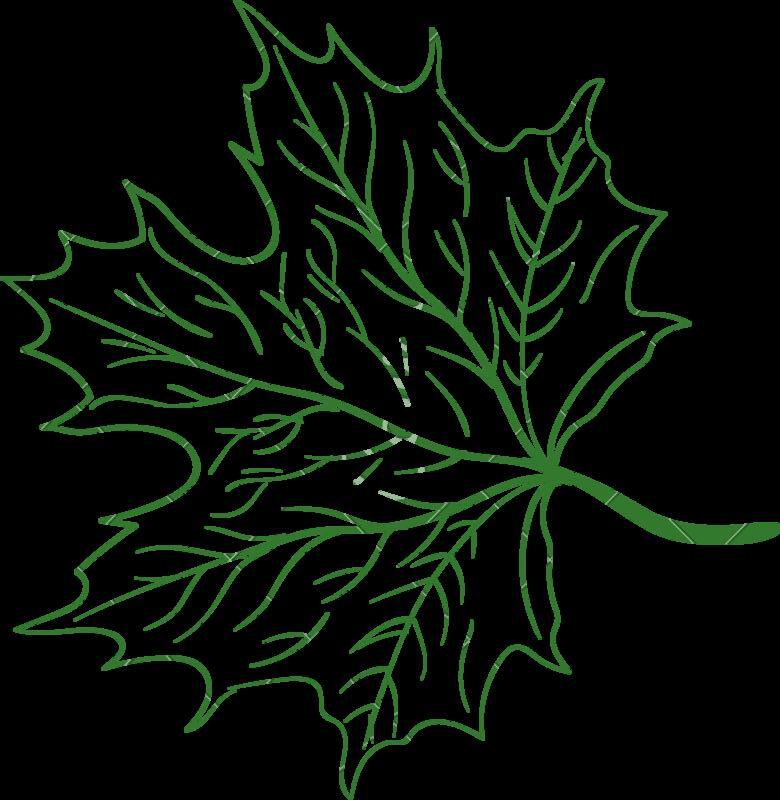




Delight in the allure of 'Lady Geranium', a captivating blend of geranium and peppermint, gracefully interwoven with whispers of patchouli, cedarwood, and vanilla






Meet 'Dame Citronella', a refreshing fusion of citronella, lemongrass, eucalyptus, lime, orange blossom, and honey, evoking the spirited essence of summer evenings


Finally, embrace the timeless charm of 'Madam Lavender', where the soothing notes of vanilla, bergamot, lavender, patchouli, and sandalwood transport you to a tranquil Victorian garden. Crafted with essential oils and enriched with citropel, these candles are perfect companions for warm summer evenings in the garden, warding off pesky flying insects while infusing your surroundings with elegance and sophistication Illuminate your space with these refined fragrances and let the essence of noble ladies from a bygone era envelop your senses
Launching at end of May 2024, just in time for summer. Follow @flickercrypt on Instagram for updates or join their mailing list by heading to the website.

Keep an eye on the Garden Folk page for an exclusive first look at these and a giveaway!

If you are a Garden Folk Supporter don’t forget to use your discount code.



Excited to have the opportunity to contribute to Garden Folk, I'm eager to explore a plant often overlooked Nettles
Undoubtedly, my favourite plant, I've spent entire workdays passionately discussing the uses and benefits of nettles, and I've barely scratched the surface of all there is to say about them
At first glance, the stinging nettle may seem like an ordinary and unappealing weed, with its serrated leaves and delicate hairs concealing a potent sting Yet behind this perhaps unattractive exterior lies a treasure trove of medicinal, culinary, cultural significance and value Nettles, with their microscopic hypodermic needles containing formic acid, deliver a memorable sting upon contact. While this sting may evoke memories of childhood mishaps, nettles actually possess remarkable therapeutic properties that have been harnessed for centuries. They have long been revered for their ability to alleviate a diverse array of ailments, from hay fever, rheumatism and arthritis, to urinary and prostate problems. The practice of urtication, deliberately exposing oneself to nettle stings, has roots in ancient healing traditions and continues to intrigue modern researchers. They harbour a wealth of bioactive compounds, including serotonin, histamine, and various phytochemicals with potent medicinal properties While it's true that some individuals may experience a reaction to the sting, everyone I've known to explore the potential of urtication (provided they were willing to endure the sensation) has reported back positively, expressing newfound enjoyment in the feeling it provides after time This experience also underscores the lesson in unlearning and recognising the influence of our cognitive biases
Recent scientific discoveries have shed light on the neurochemical composition of nettle venom, which includes serotonin and other neurotransmitters known for their mood-enhancing properties. This unique synergy of nature's medicines offers not only physical relief but also serves as a soothing balm for the mind, aiding in anxiety management and providing respite for those struggling with self-harm urges This effect is akin to the ice cube method, a technique utilised for similar purposes However, what sets the sting of the nettle apart is its multifaceted benefits While the ice cube method may provide temporary relief, the sting from the nettle could be at least as effective, if not more so, and delivers a host of additional benefits that the ice cube method misses out on This is something I believe could and should be much more widely known
Delving deeper into the anatomy of the stinging nettle reveals a wealth of medicinal and nutritional benefits The resilient roots, rich in nutrients and bioactive compounds, promote testosterone circulation, enhance male vitality, balace female hormones, and potentially manage benign prostatic hyperplasia (BPH). Above ground, the heart-shaped leaves unfurl, packed with essential nutrients such as calcium, magnesium, and iron. The seeds, bursting forth as seasons shift, offer the highest concentration of nutrients and minerals, vital for energy and resilience. From supporting adrenal function to enhancing overall vitality, nettle seeds provide a wide range of wonderful attributes. A small handful can really give you a boost of energy. Nettle stems, tall and sturdy, epitomise resilience and adaptability, finding utility in various applications, such as textiles and cordage.


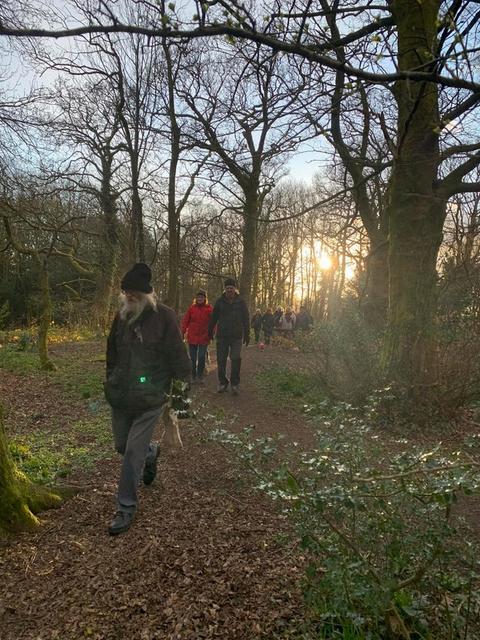
Notably, they share similarities with hemp, suggesting their potential contribution to sustainability in a wide range of material-making and construction endeavours
Nettles aren't just beneficial for humans they play a crucial role in enhancing the health and vitality of garden ecosystems As companion plants, they provide numerous benefits to neighbouring cultivars, including improved soil fertility, enhanced pest resistance, and increased nutrient availability. When planted alongside vegetables and herbs, nettles act as dynamic allies, attracting beneficial insects while deterring pests. Furthermore, nettles can be utilised to create nutrient-rich fertilisers. By steeping nettle leaves in water until fermentation occurs, gardeners can produce a potent organic fertiliser known as nettle tea. It does however, have rather an unpleasant odour that we should be aware of and avoid using indoors. When combined with other nutrient-rich plants such as Comfrey, nettle tea becomes a powerhouse of bioavailable nutrients, promoting robust growth and resilience in garden crops
Nettles hold a special place in my heart, not just for their myriad uses and benefits but also for the lessons they impart As I share their wonders with others, I'm reminded of the endless learning and unlearning that comes with foraging and connecting with nature As stewards of the earth, paying attention to the lessons of the nettle cultivates a deeper appreciation for the interconnected web of life that sustains us all I believe that learning about nettles also serves as a gateway to understanding foraging in general
Join us at Pendle Plant Craft for Nettle Day on Saturday, 1 June, at our cabin nestled within the serene surroundings of Lomeshaye Marsh Nature Reserve. It's a day dedicated to exploring the wonders of nettles learning about their uses, delving into their medicinal properties, and celebrating their remarkable presence in nature. From informative sessions to hands-on activities, we'll uncover the secrets of this incredible plant together. Stay tuned for updates on our exciting plans for the day!
If you're interested in contributing or participating in any way, whether it's through performances, crafts, creations, or holding space in any way, or just coming along to see what we do. We welcome your involvement Get in touch with us if you'd like to be a part of it To cap off the day, we'll gather to watch the powerfully emotive documentary 'The Nettle Dress,' a poignant reminder of the profound connections we share with the natural world For more information on this or any of our group activities, including free foraging and well-being walks, find Pendle Plant Craft on Facebook or Instagram, or email us
Nestled amidst the serene landscapes of Pendle, where rolling hills meet verdant meadows, lies a sanctuary of healing and connection: Pendle Plant Craft Founded somewhat serendipitously via a Facebook status, it quickly evolved into a community of friends sharing a passion for nature's wisdom Pendle Plant Craft represents a journey of collective discovery and resilience, a collaborative effort to honour the wonders of the natural world and share its gifts with current and future generations.

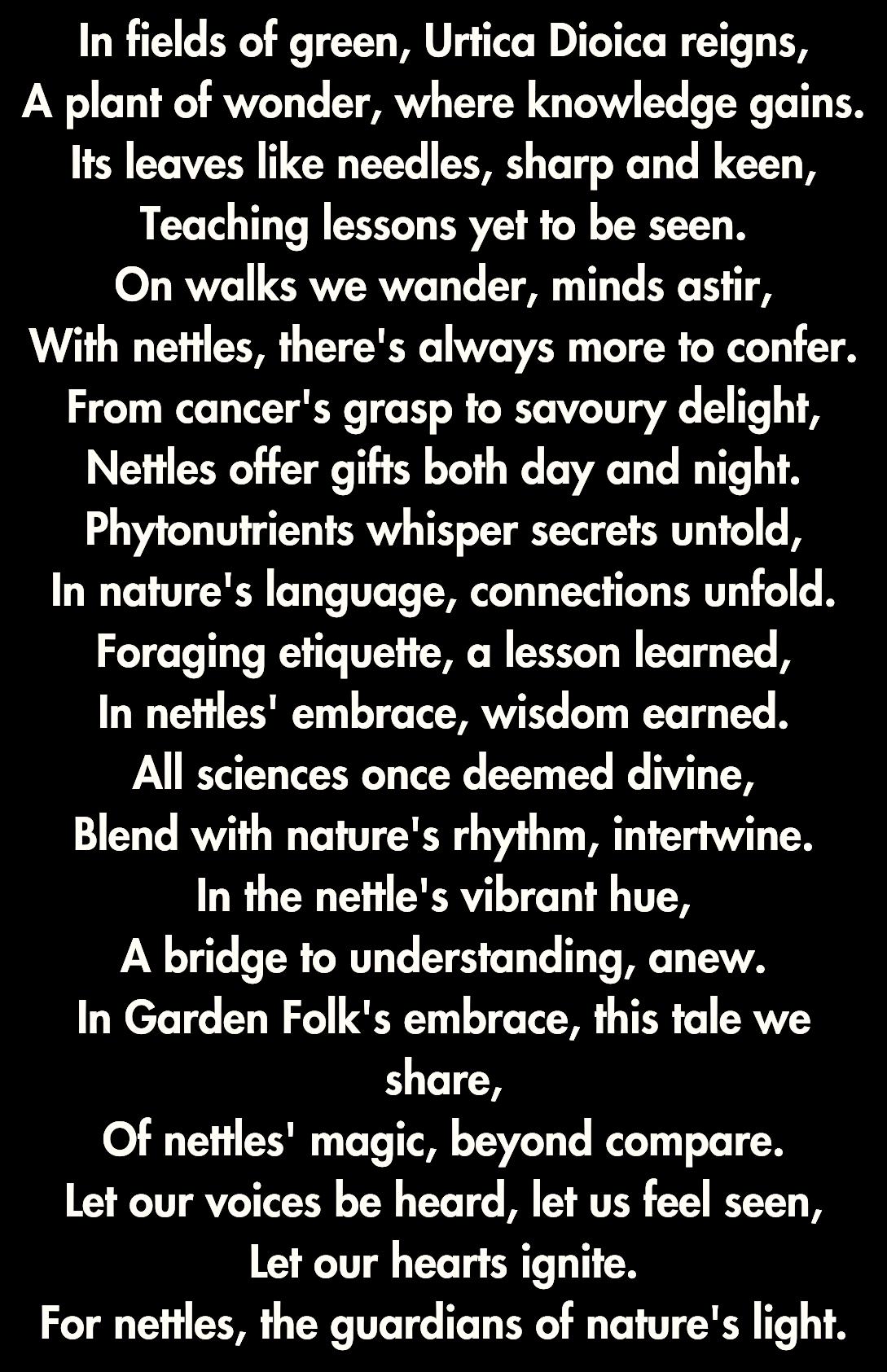

These days, gardens are generally getting smaller, new build homes tend to have less garden ground and many people are down sizing, or like me, giving up their allotments to grow at home In the current financial climate, land is an expensive luxury for many Growing in a smaller space definitely poses a challenge but can also focus the mind and help to conjure up a magical garden full of what you love the most
You may be wondering where to start and how it will be possible to achieve the garden of your dreams It is important to make a clear plan from the start, have a look at your garden and decide what will stay and what will go This will give you a clear idea of what you have to work with.
Be brutal! If it is not love, then it has to go! I remember shocking the neighbours when we moved here as I got rid of quite a few shrubs but I was just not wild on them and needed more space, so out they came!


Raised beds on otherwise redundant ground can also add valuable growing space I added raised beds to my courtyard part of the garden as it has very compacted, poor soil and previously only really housed the rotary airer which was rarely used It works much better for me now and has brought life into what was a fairly gloomy part of the garden
It is also a great idea to carefully consider what you will grow. It is important to consider the eventual height and spread of the plants chosen When I had my allotment, I grew a bit of everything, including things I did not particularly care for as they were easy, filled a gap and everyone else was growing them Now that space is at a premium, I focus on what I love If plants can pull double duty that is a real bonus I grow things like ruby chard and perennial spinach for their decorative beauty and not just as food so they really earn their place I grow purple sage both as a delicious herb and as a foliage plant to use in floral arrangements
With a little imagination, it is possible to increase your available space by growing vertically. Planters can be added to fences and walls and hanging baskets are incredible useful not just for flowers but also for salad leaves, tomatoes and herbs. Archways can be utilised for growing flowers such as sweet peas or alternatively runner beans, climbing peas or squash, and make great use of space. It can be easy to be swayed into believing that a greenhouse is a “must have”, especially when they are increasingly popular on social media, but for many they are simply not necessary and merely end up as a glorified shed and dumping ground On first arriving here, having given up my large greenhouse, cold frame, and share in a Victorian greenhouse, I did not think I would be able to grow with the same success but this has definitely proved not to be the case I started my seeds inside with the help of a propagator and grow lights, and protected anything tender I planted out with fleece or cloches
These days I have a very small lean-to greenhouse that is bolted onto my garage wall It takes up very little room but I can fit so much in by maximising the space with shelving and hanging baskets and only growing the amount of plants I can actually use. I really enjoy the planning and challenge of gardening in a smaller space and I hope you will too.
By Karen Stewart-Russell @rakeexpectations


If you want to help the bees this year, why not consider becoming a Bee Walker? No, not taking them out on a lead, but walking a designated path of your choosing through the Spring and Summer months and recording what bees you see
I became a Bee Walker last year as I was searching for volunteering roles in the wildlife sector that I could get involved in. I struggle with wanting to do so much but having limited free time to attend events, but Bee Walking fitted me perfectly.
You can pick your own route, roughly a mile long, and walk that same route once a month from March to October recording how many and what types of bees you see I thought this was a fantastic way to get me out of the house for an hour and paying attention to the natural world around me You don’t have to be a bee expert – I normally snap a pic with my iPhone and then try and figure it out later This helps you improve your bee identification skills and even if you see no bees, this is still valuable information to help understand our bumblebee populations


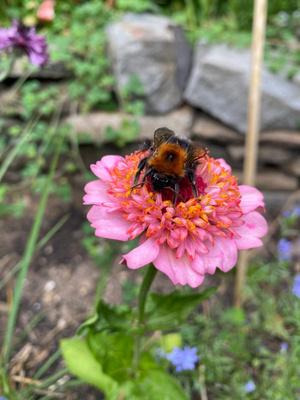

guides online and apps to help ID bees so don t be scared that you won’t have the knowledge to record what bees you see You can always record an unspecified bumblebee if you couldn’t quite catch it
And once you go down the rabbit-hole of learning about bees I have no doubt that anyone could become easily become addicted They are fascinating little creatures with an amazing life cycle journey For me, the buzz of the bumblebees at the beginning of Spring brings me so much hope and joy for things to come I really do miss them in those long winter months. The first day in Spring that I see one of those big fluffy blobs zooming past me I jump for joy and shout “The bees are back! The bees are back!” It really is a ‘buzz’.
To find out more visit The Bumblebee Conservation Trust

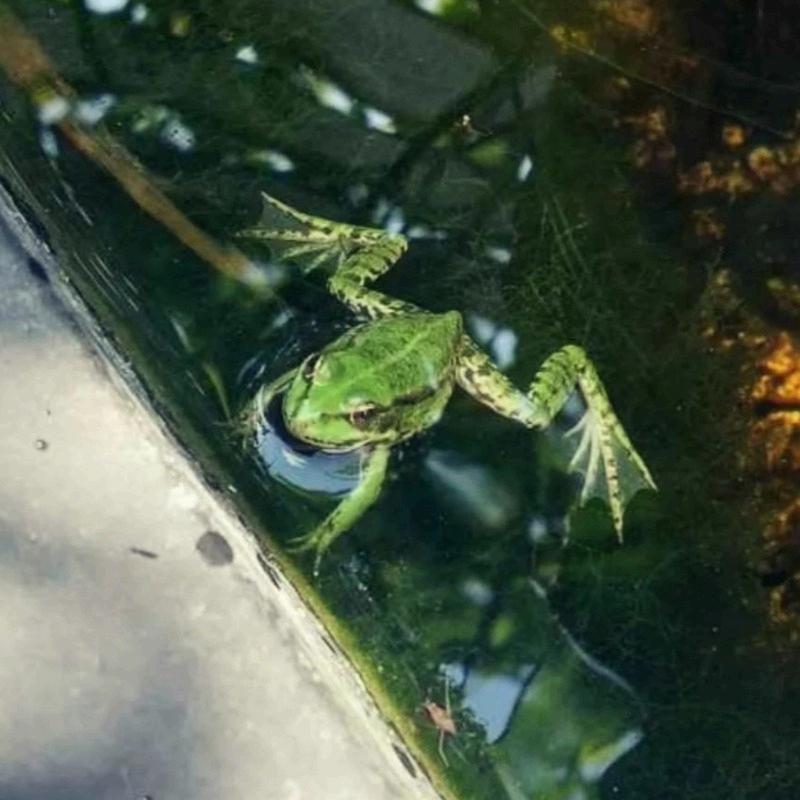
 By Mel Heris
By Mel Heris
Wildlife gardening offers multiple benefits for your mental well-being. The process of tending to a garden encourages mindfulness, as you immerse yourself in the present moment while nurturing the growth of plants and habitats. This mindful engagement with nature can alleviate stress, anxiety, and offer you a moment to catch your breath, providing a mindful escape from the pressures of daily life. Sitting back and watching the various species that visit your garden, from pollinators and birds to amphibians and mammals, creates a sense of tranquility, peacefulness, and awe. It helps provide a safe haven both for you and the wildlife visitors in your garden and helps with nurturing a harmonious connection between yourself and the natural world In this article, I want to share with you some of my best tips for wildlife gardening for mental health
Watching birds visit your garden can provide a sense of calm and tranquillity It encourages you to take a minute to sit back and relax as you observe their behaviour and interactions with each other Setting up bird feeders and dedicating time to bird watching can become a wonderful ritual, offering moments of respite from the demands of daily life


Working with plants and being surrounded by greenery has been shown to reduce stress and improve mood Planting native species also creates a sense of connection to your environment; encouraging feelings of belonging and well-being By selecting plants that are native to your region, you create a habitat that supports local wildlife and you enhance biodiversity which in return creates a beautiful serene ha f d th ildlif
Building and creating habitats for wildlife can give you a sense of purpose and satisfaction, knowing that you're providing a safe haven for creatures in your area It can also be rewarding to see wildlife take up residence in the habitats you've created Whether it's installing birdhouses, bat boxes, or insect hotels, each structure contributes to the richness of your garden's ec


The presence of water in a garden has a calming effect on the mind Maintaining a pond or water feature provides a sense of serenity and tranquillity. While the sights and sounds of water and wildlife can promote relaxation and reduce anxiety. A pond or water feature also attracts a diverse array of wildlife, from frogs, toads and newts to dragonflies, hedgehogs and birds. It will add vibrancy to your garden and provide a serene place for you to take a moment to breathe and clear your mind.
Engaging in wildlife monitoring activities encourages mindfulness and a deeper connection to nature. It can also provide a sense of excitement and wonder as you discover new species visiting your garden. Whether through photography, journaling, using wildlife cameras, or by just being outside in your garden, watching the wildlife and documenting the inhabitants of your garden allows you to appreciate the beauty and diversity of the natural world.


Spending time in your wildlife garden offers a peaceful retreat from the hustle and bustle of everyday life It allows you to slow down, disconnect from screens, and reconnect with the natural world, promoting relaxation and mental clarity Whether you're reading a book, enjoying a drink, practicing yoga, or simply sitting quietly and soaking in the sights and sounds around you, embracing quiet moments in your garden nourishes your mind and soul and rejuvenates your spirit
Every little wildlife garden task, every bird feeder filled, every native plant planted, every habitat created, contributes not only to the wildlife and biodiversity in your garden but also helps to create a safe haven for you and your mental wellbeing So, grab your trowel, put on your gardening gloves, and step into the embrace of nature
Your mind and the wildlife visiting your garden will be grateful
When you are out in your garden this month share your wldlife photos with us using #GardenFolkFriends and tagging @gardenfolkmag


As we celebrate National Children's Gardening Week this month, it's a perfect time to reflect on the importance of connecting with our children outdoors, away from the screens and distractions of technology. Gardening offers a wonderful opportunity for families to bond and create lasting memories together
Getting out into the garden with our children provides not only physical activity but also a chance to engage their senses and spark their curiosity about the natural world Whether it's planting seeds, building a hedgehog home, or simply enjoying just sitting outside talking, gardening offers endless opportunities for connection
Growing your family's favourite vegetable can be a rewarding experience for children, teaching them valuable lessons about where their food comes from. It also instills a sense of responsibility as they look after their plants and watch them grow.

Beyond the practical skills gained, gardening creates emotional connections between parents and children. Working side by side in the garden provides quality time for shared experiences. It's a chance to slow down, be present in the moment, and enjoy each other's company without the distractions of daily life Listening to the sounds of birds chirping and feeling the sun on your face while digging in the soil can be incredibly grounding and calming for both children and adults alike It's a reminder of the simple joys of life and the beauty of the natural world around us
So, this weekend, why not step outside with your children and start gardening together? Whether you have a spacious back garden or just a small balcony, there are endless possibilities for connecting with nature and each other Whether you're planting seeds, building a bird feeder, or simply enjoying the outdoors together, gardening can create magical moments and cherished memories that will last a lifetime.

If you are a Garden Folk Supporter don’t forget to use your discount code to get your hands on a discounted copy of Lee’s fabulous book!

Hello, my name is Bella and I'm eleven years old. I like gardening because I love being outside. In lockdown, we built a mini allotment in our front garden, and every year since we have planted peas
Peas are a good companion plant for radishes, which means they grow well together
Every time I walk past the peas on the way to the car, I grab a pod and I have the freshest, yummiest snack In the summer I live off peas, we have them for tea every night; pea and potato curry, sausage, chips and peas, and many more.
The only thing that peas need is something to climb up. We usually put bamboo canes in the ground and tie some twine onto each one, so it looks like a fence. Another good thing about peas is that they don’t need a lot of space. As long as you don’t have too many seeds, you can just put them in a large bucket Once you buy pea seeds, you won’t have to buy them again, just dry them out and hey presto, you have more seeds to plant next Spring
The last thing that I love about peas are the flowers before they turn into pods. They’re not only pretty and fragrant, but they also attract helpful bees and butterflies.
I really love peas!

Imogen, Young Folk Champion, saysI think it’s really interesting that you can grow peas with such little space it’s also really cool that you can reuse the peas by drying them out and planting them all over again!
Photo Credit: Megan Tayor-Flemming

1 onion
Garlic (fresh or frozen, measured with your heart)
1tbsp curry powder
½ tbsp garam masala
1 teaspoon tumeric
½ teaspoon ginger
1 tin tomatoes
1 tin coconut milk
1 cup of fresh peas (or frozen if you don’t have a huge harvest)
3 large potatoes or a whole bunch of new potatoes
Fresh coriander to garnish
1. Heat oil in the pan, and slowly sauté the onion until soft, this takes longer than you think but it's worth being patient.
2. Add the garlic and spices and continue to fry until fragrant. You can add more oil at this stage or a splash of water if preferred.
3. Scrub and slice the potatoes and add them to the pan with the tinned tomatoes and coconut milk. Simmer until tender.
4. Add in the peas, simmer for a few more minutes and season to taste
5. Chop the fresh coriander for garnish
Serve with boiled rice, naan bread or both!

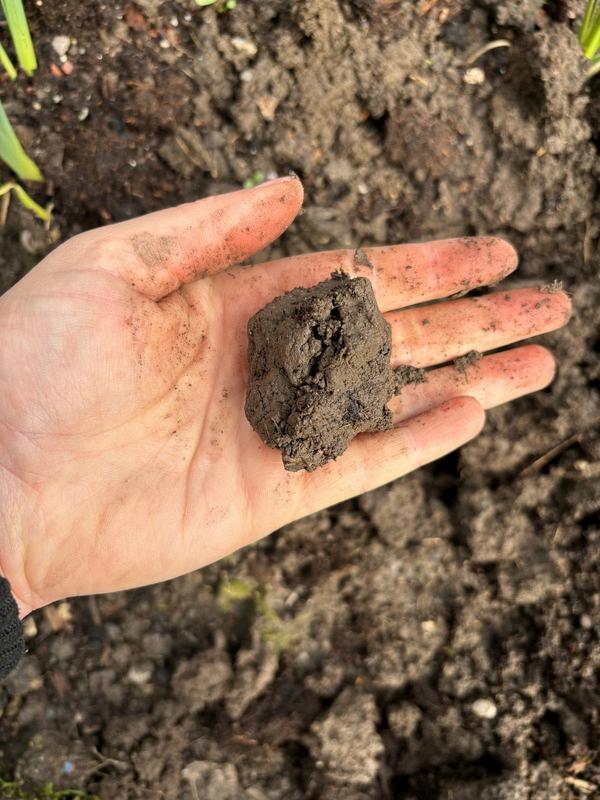

Luckily finding out what the pH of your soil is, is easy You just need to buy a pH testing kit They come in many different styles, from simple litmus paper tests to little bottles of liquids With all the tests, you will need to dig a hole about a spade’s depth and take a little bit of soil from the bottom, you don’t want to test the top as that could just be compost or mulch. Then follow the kit's instructions. It’s super simple!
Even without a kit, you can figure out the type of soil you have: Just take the soil you dug up from the hole and add a little water to it. Now, see if you can roll the soil into a ball. If it's gritty and you cannot roll it into a ball you have sandy soil. If you can roll it into a ball, try to roll it into a sausage if you can’t do that and it starts to collapse then it's likely you have a sandy loam which is a gardener’s dream! Lucky you However, if you can roll it into a sausage and it stays intact, see if you can keep going If you can and you get to a pencil thickness, then you most likely have clay soil You can also tell if it's clay by the texture; it will feel slightly slimy, and you could probably make a little pot from it! Silty soils are quite unusual and you tend to not find them in an average garden, it would feel soapy and wouldn’t clump



Another popular way to test your soil texture or type is to use the jar method Using the same hole, take a handful of soil and pop it in the bottom of a jam jar Fill up the jar with water and pop a few drops of washing liquid in it. Shake the jar until it's all mixed up and leave it on the side for 48-72hrs. The soil will separate, and you can draw a line at each separation. The bottom layer is clay, the middle is silt and the top is sand. The one with the largest section is the type of soil you have.
If you have a large plot or have removed lots of plants, it's worth testing in a few different areas.
You can also guess at your pH level by looking at the weeds that thrive in that part of your garden For example, nettles (Urtica dioica) tend to thrive in more acidic soil whilst creeping thistles (Cirsium avense) tend to prefer alkaline However, most weeds don’t behave, and I would always suggest doing a soil test just to be sure
Once you know your soil pH you will no doubt be wondering if you can change it you can Unfortunately, it's often expensive and time-consuming so I generally advise people to work with what they have, but you can add organic matter, which may tweak it, as well as help the structure of your soil
Now you ’ re armed with this useful information you can purchase new plants with the confidence that they should thrive in your soil type. You will understand a little better why a plant may be suffering from a nutrient deficiency and help it along with the addition of correct organic mulch. Additionally, you’ll have increased confidence that you have a soil type where living organisms can grow, and your existing plants will thrive.

This Month, we’re back with Leanne for an update on how her “Following in my Footsteps” garden for BBC Gardeners’ World Live Event is going.

Now no amount of prep could have prepared me for the immense learning curve I’m been on for the last 6 months. After I received the email to confirm I’d secured a Beautiful Border I took some time to let it sink in. I had so many questions and was nervous to make a start for fear of ‘looking silly’ or getting things wrong. I had no clue on where to begin. But I contacted lots of lovely people who had created borders before and received some fabulous advice. I started to make a list of the most important areas for the border to get sorted…funding being number one. I also learnt that if you don’t ask you don’t get the first email to a supplier asking if they’d like to sponsor or help with the garden honestly made me feel sick Although it’s still not my favourite thing to do it has led to me creating some wonderful bonds with suppliers and gaining so much knowledge from them I’ve loved researching planting combinations, visiting tree nurseries and acquiring new DIY skills, all of which would not have happened without the border.
 By Leanne
By Leanne

Oh, the numerous lists I don’t think there is a wall, notebook or handbag without a list on or in it somewhere Itend to write lots of lists when I wake up, currently 2 am is not my friend! I’m blaming the nerves and excitement. I’m now at the stage of the minute detail, the hubby doesn’t quite get my fascination with having to write down the exact number of 14mm brass eye screws or the overall coverage for creeping thyme needed. My children haven’t got away without helping either and given the border was inspired by them, it’s only right they are involved. They have sanded, painted and tested out lots of the elements that will eventually feature in the garden. I’ve loved this part of the preparation, seeing them take an interest and pride in the things that they have helped create
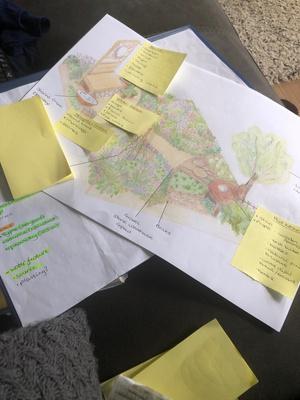
The border is based on inter-generational education and experiences through gardening. As such, it’s important to me that the garden has a life after the show. I’m so happy that the planting and some of the key elements are going to be used by two primary schools in the creation of new school gardens. My day job as a primary school teacher has meant that I’ve been able to involve the children within my setting in growing of some of the plants for the border. The awe and wonder that growing provides is infectious. My main hope is that the border provides the starting point for the schools to embrace school gardening and all the benefits this brings both to the children and wider community I will be working closely with these schools going forward to help and support in the creation and running of their school gardens A super exciting project
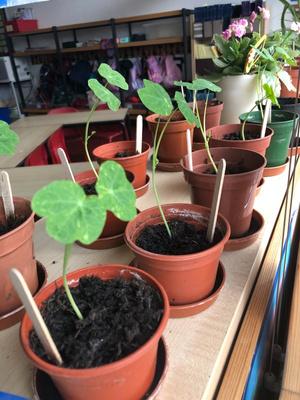
I cannot begin to tell you how much I’ve been completely humbled by the help and support I’ve received throughout this process: family and friends have been there when I’ve needed a good old cry and a stern talking to when I’ve threatened to quit, the amazing people that have donated funds through the GoFund me page, the wonderful companies that have sponsored the garden, not only giving plants and products but also their valuable time and expert advice too, and the amazing Gardengram community for all the messages and chats, there really isn’t a community like it!
Now the countdown to the build beings. EEEK! I can’t wait to show you all the border and if you are coming to the show be sure to come and say hello.
Wood @my little patch of earth


Here at The Gardeners Co. CIC we’ve recently built an epic hanging herb planter filled with more than 20 different varieties of herbs and it’s safe to say that we are obsessed. From classic varieties of rosemary and dill to unusual sensory wonders such as blackcurrant sage, pineapple mint and Vietnamese coriander, this feature in our garden is certainly one of the ones which draws the most attention and gets the most use. As with all growing spaces, our planter comes with its own challenges, largely in the way the pockets dry out quickly and there isn’t a huge amount of space. So, we thought we’d share with you some advice on how to look after your herbs to get the very best from them.
People are often scared of pruning their plants, but in the case of herbs, a good chop can do them the world of good! In the autumn, most perennial herbs will benefit from getting a haircut of at least a third of the plant. For plants such as Rosemary and Lavender, you want to ensure that you don’t cut down into any brown woody areas near the centre of the plant as it likely won’t regrow, instead make sure you cut above some fresh greenery In the spring, you want to again remove around a third of the plant as well as any dead, damaged or diseased stems This helps to keep the plants looking full, healthy and happy, as well as promoting vigorous growth as the season gets started
One of our favourite times of the year is when all of the herbs are in full flower, drawing in the bees to feast, and we use the flowers in baking and cooking for something extra special But, once the flowers are past their best, we’d advise deadheading them, as you would flowers in your cutting garden, so that the plant can put all of its energy into producing tasty leaves and more flowers, rather than producing seed for its next generation
Mint is one of the best but most invasive herbs we have Mis-planting it is a mistake you only have to make once before learning your lesson as it takes over your entire garden Mint should always be kept contained, unless you are ready for a meadow of mint to swarm your space This doesn’t mean you can’t plant your mint out into borders and beds, simply that we recommend you keep it in a larger pot sunken into the ground and covered over with soil. Every year, you can then dig up your pot, divide and prune your plant and then pop it back into its spot.
If you want to get more for your money, mature herbs can often be divided or propagated to make new clones to share with friends and family. Herbs such as mint, rosemary, chives, oregano, basil, thyme and sage are easy to divide, and all except the chives can also be propagated by popping cuttings into a glass of water. Cuttings should be around 10 cm long with the bottom leaves removed. Leave them on a sunny windowsill and within a few weeks you should start to see roots emerging. Once you ’ ve got a good set of roots, you can transfer your new plant to soil and let it grow wild! If you ’ ve opted to divide plants, simply use a clean, sharp garden tool such as a hori hori knife or a saw and cut it into 2-4 pieces. It’s best done in the plant's dormant season to cause the least disturbance, but the plants will soon recover and bounce back in the spring



Herbs in general don’t enjoy being sat in a puddle of water, so it’s really important to ensure your borders, beds, pots and planters have good enough drainage, particularly during the winter months. For pots, this may mean adding some feet to bring them off the ground, or adding extra grit into your planting compost. For the ground, this may mean adding compost as a soil improver or grit to help reduce the risk of soggy roots. Equally, in the summer months, they’ll get thirsty and won’t enjoy bone dry soils, so make sure you keep an eye on them weekly. In our garden, we ’ re going to install some DIY hose pipe drip irrigation into our pockets to help us to battle dry soils, so keep an eye on our social channels to see more!
In the spring and summer months you may find yourself with an abundance of herbs that you simply cannot use quickly enough fresh Regularly harvest your herbs will only help them to keep producing, so here are a few ideas on how to maximise your garden herbs:
Dry/dehydrate herbs for your spice racks
Incorporate fresh chopped leaves into butters and freeze them for a special occasion
Infuse oils with fresh herbs for a boost of flavour in your cooking Soak chive flowers in white wine/cider vinegar to create a delicious salad dressing base
Make art with your herbs, from dried leaves to flower pounding them into fabrics

We’d love to see your creative herb spaces, so be sure to tag us @thegardenerscocic and @gardenfolkmag on Instagram with your culinary creations!
Here at Garden Folk we love herbs and think they are a must for any gardener, no matter your growing space they will bring you growing joy. Check out our faves below:
Ally loves - “All things mint my top one has to be Black Peppermint. Amazing foliage and fo course delicious”
Anjee loves - “Thyme Lemon or Orange, the scent is amazing and tastes good in almost anything”
Ellen loves - “Lemon Verbena as it is wondeful for a delicious summer herbal tea”

The past few weeks have been all about compost once again as we get our new allotment set up
The first task was covering it with carboard The kids and I ferried the huge amount of cardboard we have been saving in plot 27B's polytunnel, across to plot 40A I had managed to remove most of the tape a few days before but as always, I missed loads too. We removed the last of the tape and we laid it down across the newly prepared area. Normally, I would have watered the cardboard but it was due to rain that evening, so I didn't bother. Then came the absolutely mammoth task of topping this huge 30 square metre area with homemade compost.

I mentioned last month that I had bagged up the compost that was previously in the pallet collars, so this was close and fairly easy to place down The rest took some time We removed our compost bin from our garden at home With the compost bay system now in place, we can just bag it up and store it all in one place I had a builder’s bag of well-rotted chicken bedding over on plot 27B, so I went to get my wheelbarrow Sure enough, not only did I have a flat tyre on it but the tyre was perished too Another equipment malfunction to address! I grabbed a spare builder’s bag and started shovelling it in to that, just full enough that I could drag it to plot 40A 4 trips later, it was emptied onto the new beds Still needing more, I emptied the bottom of the compost bay three This was some of my well-rotted bedding from plot27B a few months back I still didn't have enough though So, I went across to plot 27B again and emptied both of the dalek compost bins My wife doesn't know this yet and I know I am in trouble when she reads this!

Sorry Nat! I love you but I needed that compost more than you!
Finally, after all of that, the cardboard had a good covering and I managed to rake it to a point where it was much more raised and level Hopefully, the addition of all this organic matter and raising the level will reduce the amount of standing water on the plot
The next stage for this huge space, is to get some fresh wood chip and create a few walkways This will separate this area into manageable growing beds and give us a small area to walk through and work, without having to walk on the soil itself
I also topped off Bay 2 of the compost system after cutting the grass for a family member I was able to then layer it with the brown waste I had in bay 3, along with the food peelings, egg shells, coffee grounds & shredded toilet rolls. What a result it was to be able to take all those grass clippings away and put them to good use. After just a week, I was replacing the pallet on the front, as it had pushed away with the weight behind it. When I cut into it to chuck it back in, I was met by steam and warmth. This was incredible! It’s exactly what I want from this set up, as it will help me to create a better quality compost, much quicker! I look forward to updating you on its progress!
A much more productive month on the plot with so many more plans for the upcoming month


This month, I’m going to talk about overwhelm. Garden overwhelm right about now becomes a real thing. Every year the list of jobs to do in May becomes HUGE! Planting out, watering, weeding….
That first bit of heat hits, the plants grow like you wouldn’t believe, and it becomes a full-time job to keep up with it all. I’m here to tell you not to panic- here is your pass to say ‘it’s ok’.
The #dahliafolk seed grow-along is now in full swing; I have excelled even my own expectations as the ‘expert’ grower with just the one seed germinating! We had a big old laugh at this during the monthly seed sowalong with me and editor Ally! (You can catch up with this on the Garden Folk Instagram page if you missed it).
I’ll keep you updated on the little ‘seed that could’ during the month!
We can only do our best and nature will just do its thing!
However, just in case you find yourself with time to spare, you can get sowing your biennials ready for flowering next year. Biennial means once every two years (as opposed to biannual which means twice a year!) and these will happily overwinter if planted out around late September, early October time, but do remember to keep those seed trays VERY well-watered in any heat over the summer! My three faves are wallflowers, honesty, and foxgloves
So, in summary, tend to your seedlings, sow the seeds, attend to the weeds, but don’t worry about getting it all done, take time to enjoy the process

May is a beautiful month in the garden. The weather is hopefully mild and frosts are few and far between. This means that spending time outdoors is a joy and working through that to do list should be a breeze!

Flowers
Primrose
Cornflowers
Poppies
Calendula
Sunflower
Nasturtium
Sweet Williams
Edibles
Courgettes and squash
Climbing Beans
Beetroot
Purple Sprouting Broccoli
Carrots
Basil
Sweetcorn
Come and join the @gardenfolkmag team for live sow alongs throughout the month.

The Two Good Gardeners are back with series three of their popular gardening podcast Great for anyone who enjoys growing their own flowers, fruit or veg


Here’s the Garden Folk Mag task list for May to keep you up to date with the job list this month
Watch out for late frosts and be ready to protect your seedlings
Don’t mow your lawn #NoMowMay
Enjoy an al fresco dinner, or even a cuppa, and admire how the garden is developing.
Earth up potatoes
Remove lily beetles if you spot them.
Consider netting soft fruits to protect from birds.
Plant out young plants once all risk of frost has passed
Feed and water container plants.
Finish making supports for climbing plants Harden off tender plants - put them out in the day and bring them back in at night
Sow seeds outdoors
Make your own fertlizer from nettles and/or comfrey.
This month we asked you:
“How does your garden help your mental health?”
I struggle loads with anxiety and getting in the garden just calms my mind and allows me to switch off. Gardening is full of mindful activities which are so beneficial to my mental health
@jensgardenlife
My garden is my break from a stressful corporate job where everything moves at a fast pace, the allotment forces me to slow down and take my time More and more it’s become a space for some quality time with my son where it teaches him to enjoy nature and where food comes from, also the joy of giving someone flowers that you ’ ve grown @fiveminutegardener
It helps me to switch my brain off for a little while I have C-PTSD and without gardening I truly believe that my recovery would be that much harder When I can’t get outside or into nature then I feel the old thoughts creeping back in. Just half an hour in the garden, really does ground me. Time outside in Green spaces should be prescribed by GP’s, it would make a huge difference to a lot of people.
@home at springcottage
My garden birds help quite my mind As soon as I step outside I’m off my phone and just listening @thewild gardener

It’s a place of peace for me from a very busy family and work life. I feel better connected with the world around and it leaves my menopausal brain in a better place In a way it is like a form of meditation and the garden doesn’t want any more from you than you can give @j9 positivity thomas
We got our allotment just after the birth of my second child. It meant that I had a space to go to for when either of us were overwhelmed. My fourth trimester felt so much easier than my first borns, who was sadly born just before the COVID breakout, which obviously was not good for anyone's mental health! @thealberyallotment
I have ADHD so my brain never stops running. My garden helps me to quiet my mind and find some headspace, helping me to keep burnout at bay @kendallmarieplatt
For me, it’s the one thing I really do for myself, by myself, and seeing my plants grow makes me think “ah, I’m doing something right and I’m quite good at it.
@premierpolytunnels
My ga brai prese place never g there's Sometim going o For som with bei symbo even w When magic fully fl label A that My ga bucket the ro world A

brain off for PTSD and believe that that much et outside or old thoughts lf an hour in ground me. paces should s, it would e to a lot of cottage
It's cal natu c satisfa cared A cou like a back thoug mind feel re therap around me gh it’s my s getting my ng that’s full Now if it g in North actually get rdening ws eel more in nces I don't hops for my hoices there me d I'll say it ce has saved ne occasion My allotment he chaos in As soon as I trance, I'm ed. ill







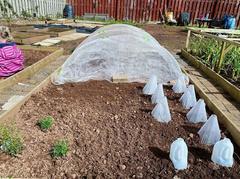


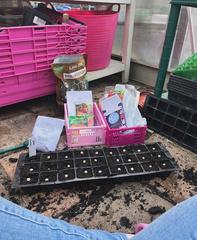
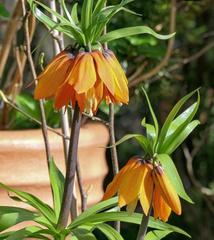











We appreciate all the support given to the magazine by all the Garden Folkour readers, writers, industry supporters and anyone else who cheers us on Running the magazine each month does incur financial costs though, so if you are able to contribute, either with a one off payment or by becoming a member, it would really help to keep the magazine going... and growing.

There are currently three membership tiers to choose from, all with great benefits














Set the date for June 7th for the next issue